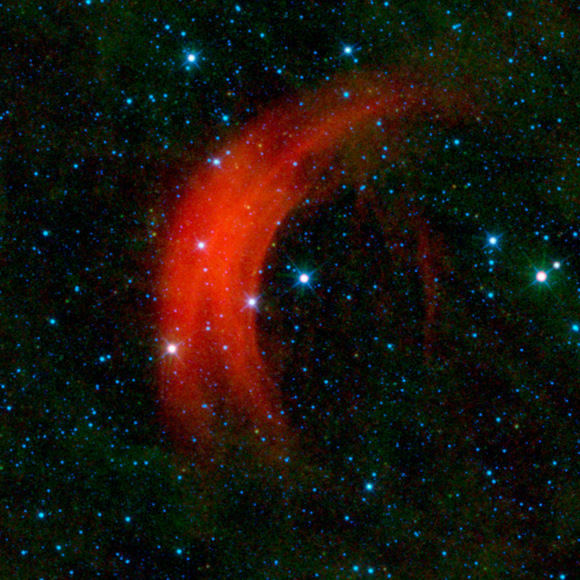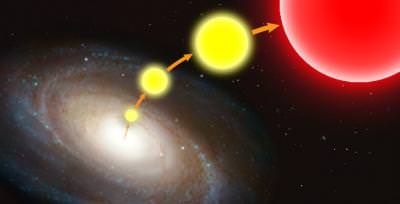[/caption]
It’s not quite like being kicked off a reality TV show, but some stars can get kicked out from their home galaxy. These stars – called various names like rogue, runaway or hypervelocity stars – were predicted to exist for quite some time, and finally just in the past couple of years a few of them have actually been discovered. But now a group of nearly 700 rogue stars have been found on the outskirts of the Milky Way. The astronomers who found them argue they are hypervelocity stars that have been ejected from the center of the galaxy.
“These stars really stand out. They are red giant stars with high metallicity which gives them an unusual color,” said Kelly Holley-Bockelmann from Vanderbilt University, who conducted the study with graduate student Lauren Palladino.
They found these stars analyzing the millions of stars cataloged in the Sloan Digital Sky Survey.
“We figured that these rogue stars must be there, outside the galaxy, but no one had ever looked for them. So we decided to give it a try,” said Holley-Bockelmann, who is studying the behavior of the black hole at the center of the Milky Way galaxy.
Runaway stars are kicked into motion either through a supernova explosion of a companion star, through gravitational interactions with other stars in a cluster, or through encounters with a black hole. One scenario could involve a binary pair of stars that get caught in the black hole’s grip, and as one of the stars spirals in towards the black hole, its companion is flung outward at a tremendous velocity.
This is the scenario the researchers focused on, and so they looked for red giant stars just outside the Milky Way.
Red giant stars are the end stage in the evolution of small, yellow stars like the Sun. So, the stars in this new red giant rogues category should have been small stars like the Sun when they got ejected. As they traveled outward, they continued to age until they reached the red giant stage. Even traveling at hypervelocities, it would take a star about 10 million years to travel from the central hub to the spiral’s edge, 50,000 light years away.
“Studying these rogue stars can provide us with new insights into the history and evolution of our home galaxy,” said Holley-Bockelmann
There are a few methods for discovering runaway rogue stars. The first is to examine stars individually and analyze their motion in the plane of the sky (proper motion) along with their motion towards or away from us (radial velocity) to determine if a given star has sufficient velocity to escape. The second is to look at the effects some stars have on the local environment. Since young clusters contain large amounts of gas and dust, stars plowing through it will create bow shocks, similar to those a boat makes in the ocean.

The team from Vanderbilt selected these stars based on their location in intergalactic space between the Milky Way and the nearby Andromeda galaxy and by their peculiar red coloration.
The researchers’ next step is to determine if any of their candidates are unusually red brown dwarfs instead of red giants. Because brown dwarfs produce a lot less light than red giants, they would have to be much closer to appear equally bright.
Source: Vanderbilt University


Bow shocks are one of my favourite types of structure in space… a google image search brings up some wonderful examples (and interesting diagrams)
If stars are being ejected by the Milky Way galaxy, there must also be stars which have been ejected by other galaxies. Perhaps some few of them could be found approaching our own galaxy?
like Anita responded I didn’t know that any one able to get paid $9717 in a few weeks on the computer. have you read this site===>>http://must2visit.blogspot.com
Like planet X, or dwarf star class? Maybe.. who knows?
Maybe there is wars between galaxy.. stars and planets as the bullet, shooting everywhere. Will happens in next billion years, when Andromeda and Milky Way have collision.. the future of an expanding universe. the area of rogue stars and planets will dissapear between two galaxy.. Who’s will win the battle?
Always new news from outside everyday